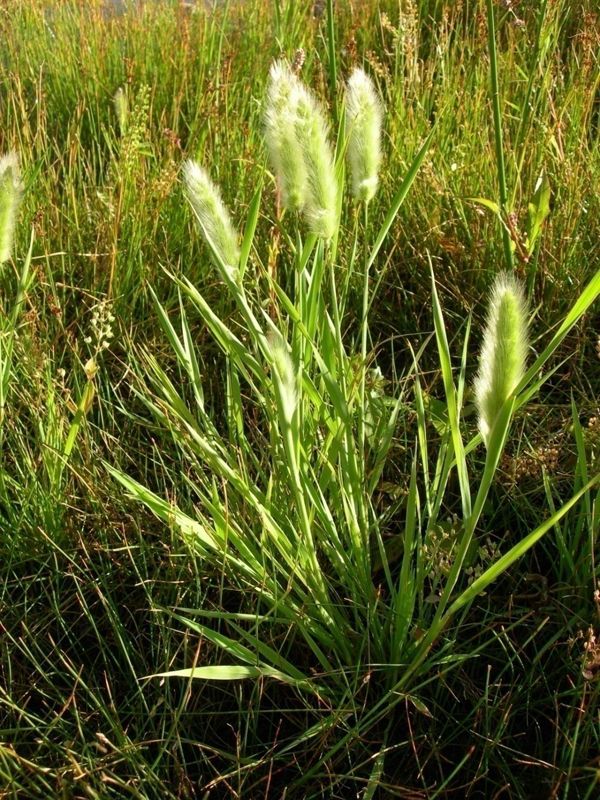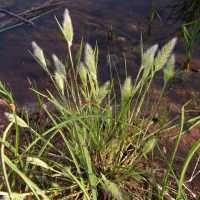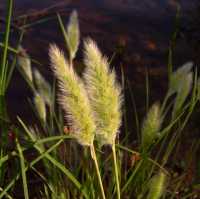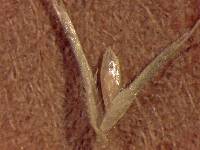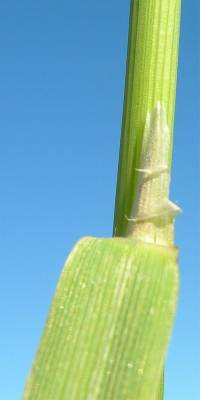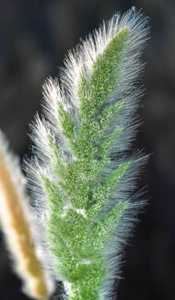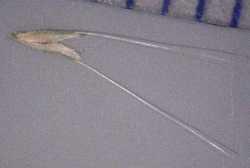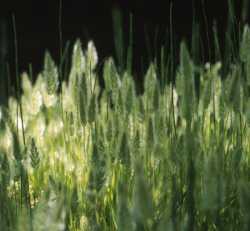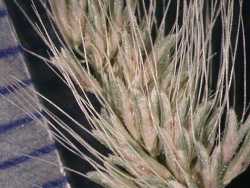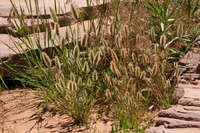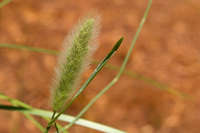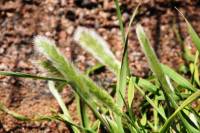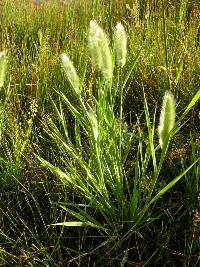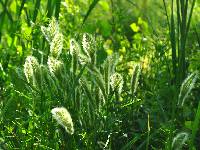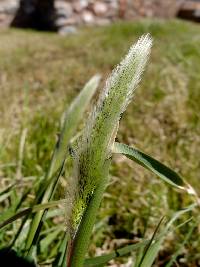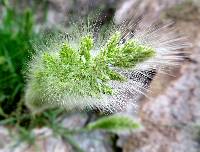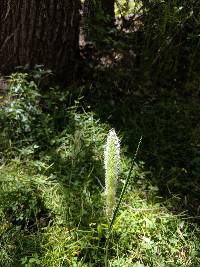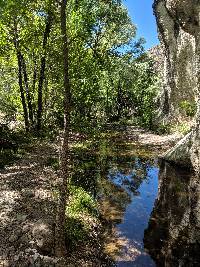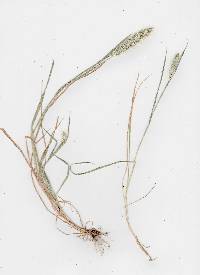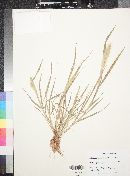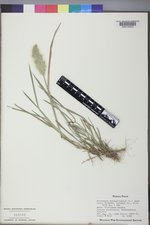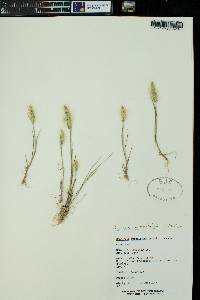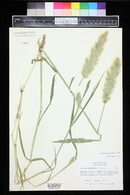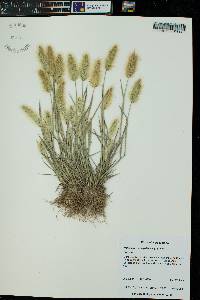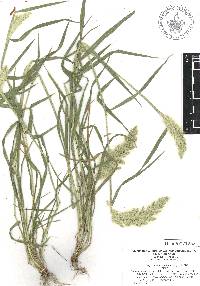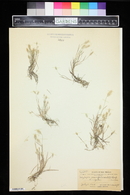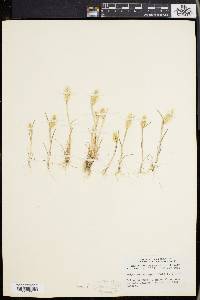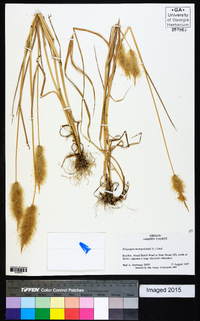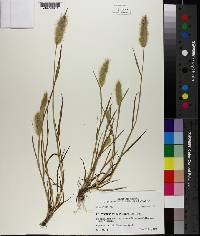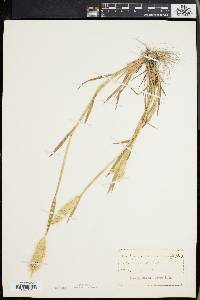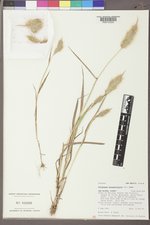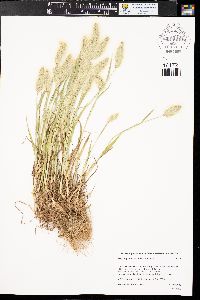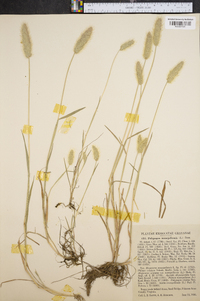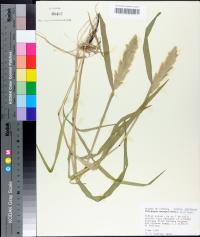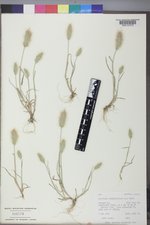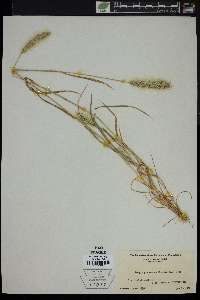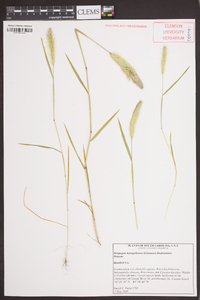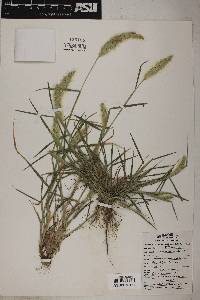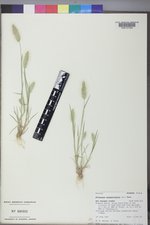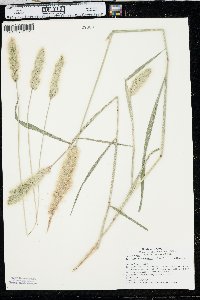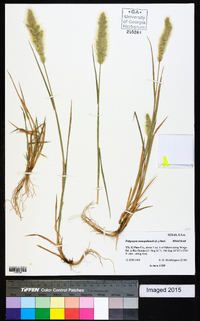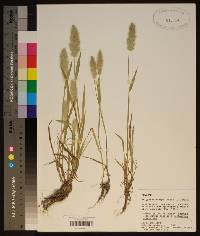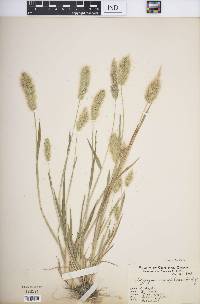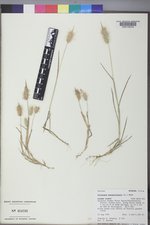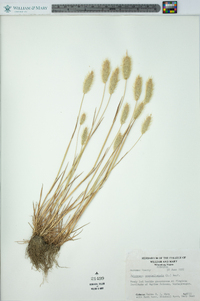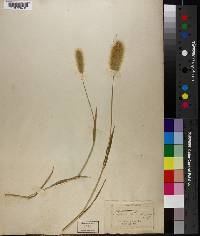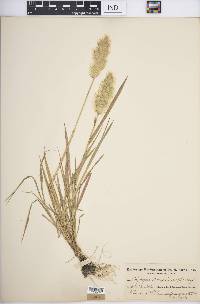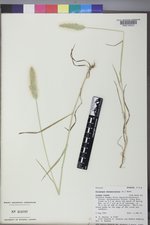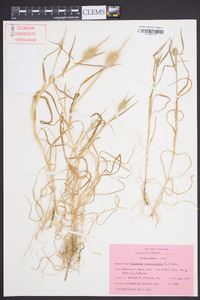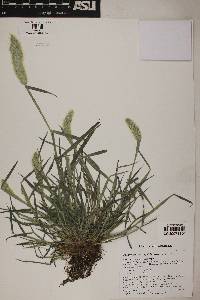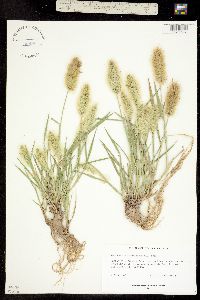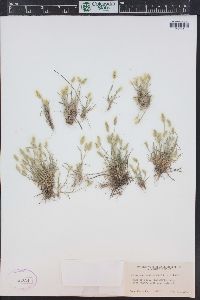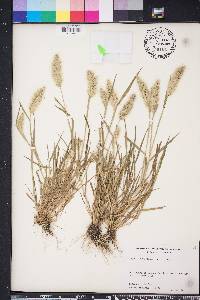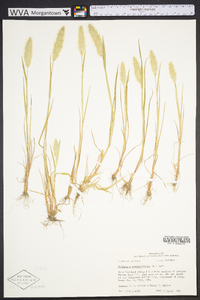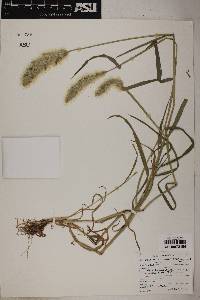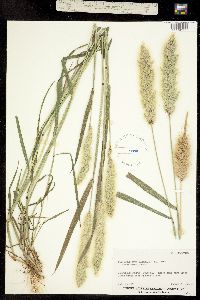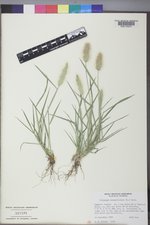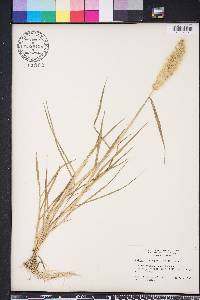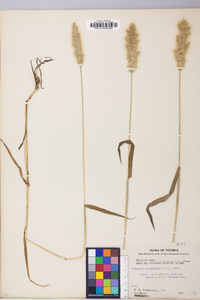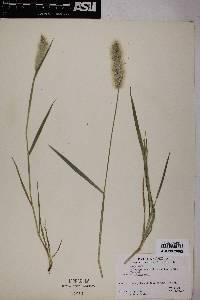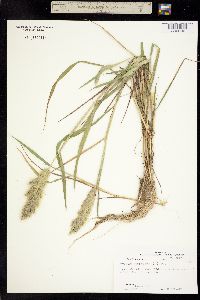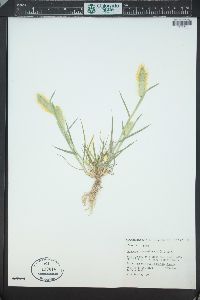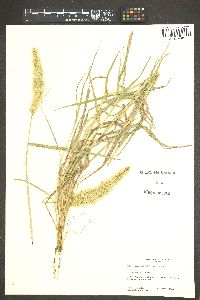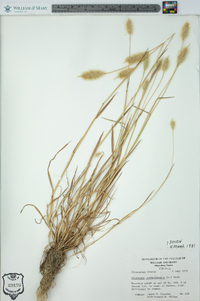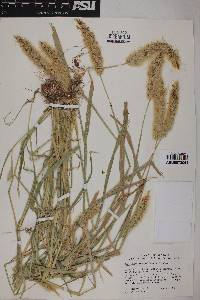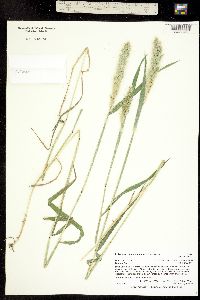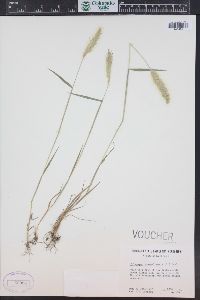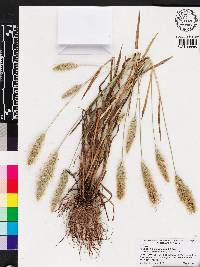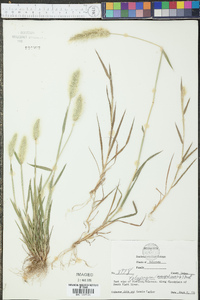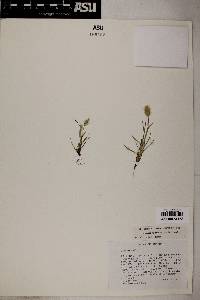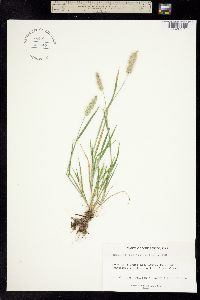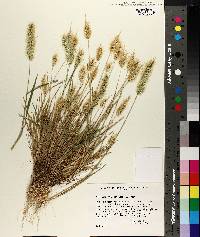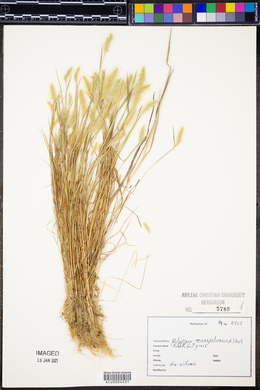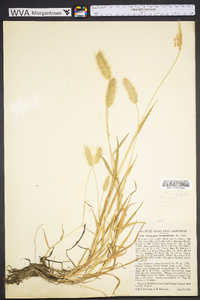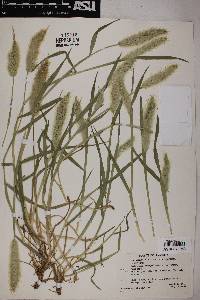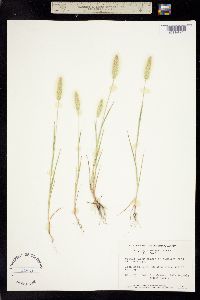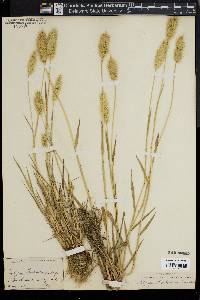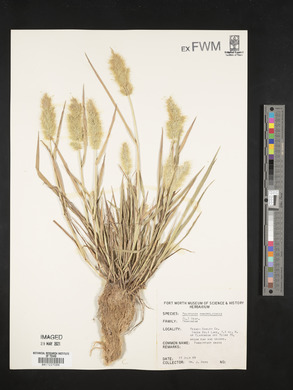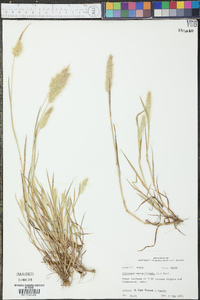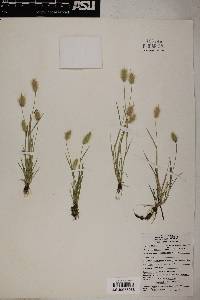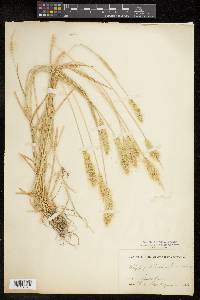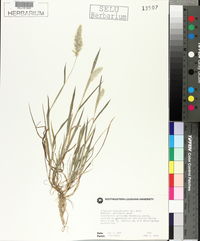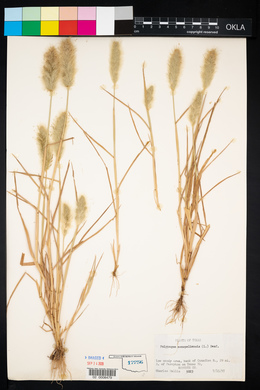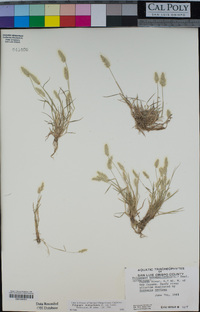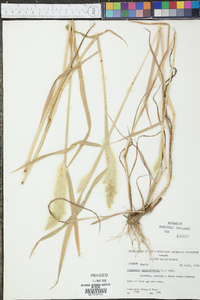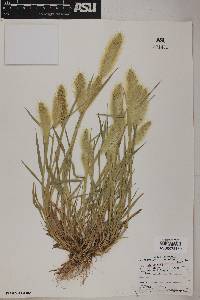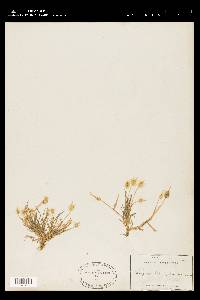
|
|
|
|
Family: Poaceae
Annual Rabbit's-Foot Grass, more...annual rabbitsfoot grass, rabbit'sfootgrass, rabbitfoot beardgrass, rabbitfoot grass, rabbitfoot polypogon, rabbitfootgrass (es: zacate cola de zorra)
[Alopecurus aristatus var. monspeliensis (L.) Huds., moreAlopecurus monspeliensis L., Phalaris crinita , Phalaris cristata Forssk., Phleum crinitum Schreb., Phleum monospliense (L.) Koeler, Polypogon flavescens J. Presl, Polypogon monspeliensis f. argentinus Hack., Polypogon monspeliensis f. nana Stuck.] |
Dr. David Bogler, USDA NRCS PLANTS Database Annuals, Aquatic, leaves emergent, Terrestrial, not aquatic, Stems nodes swollen or brittle, Stems erect or ascending, Stems geniculate, decumbent, or lax, sometimes rooting at nodes, Stems solitary, Stems caespitose, tufted, or clustered, Stems terete, round in cross section, or polygonal, Stem internodes hollow, Stems with inflorescence less than 1 m tall, Stems, culms, or scapes exceeding basal leaves, Leaves mostly cauline, Leaves conspicuously 2-ranked, distichous, Leave s sheathing at base, Leaf sheath mostly open, or loose, Leaf sheath smooth, glabrous, Leaf sheath and blade differentiated, Leaf sheath enlarged, inflated or distended, Leaf blades linear, Leaf blades 2-10 mm wide, Leaf blades mostly flat, Leaf blades mostly glabrous, Leaf blades scabrous, roughened, or wrinkled, Ligule present, Ligule an unfringed eciliate membrane, Inflorescence terminal, Inflorescence a dense slender spike-like panicle or raceme, branches contracted, Inflorescence solitary, with 1 spike, fascicle, glomerule, head, or cluster per stem or culm, Inflorescence spike ovoid, lanceolate, or oblong, not more than twice as long as wide, Inflorescence single raceme, fascicle or spike, Inflorescence branches more than 10 to numerous, Flowers bisexual, Spikelets pedicellate, Spikelets laterally compressed, Spikelet less than 3 mm wide, Spikelets with 1 fertile floret, Spikelets solitary at rachis nodes, Spikelets all alike and fertille, Spikelets bisexual, Spikelet s disarticulating below the glumes, Spikelets falling with parts of disarticulating rachis or pedicel, Rachilla or pedicel glabrous, Glumes present, empty bracts, Glumes 2 clearly present, Glumes equal or subequal, Glumes equal to or longer than adjacent lemma, Glume equal to or longer than spikelet, Glumes awned, awn 1-5 mm or longer, Glumes keeled or winged, Glumes 1 nerved, Lemmas thin, chartaceous, hyaline, cartilaginous, or membranous, Lemma 5-7 nerved, Lemma glabrous, Lemma apex acute or acuminate, Lemma apex dentate, 3-5 fid, Lemma mucronate, very shortly beaked or awned, less than 1-2 mm, Lemma distinctly awned, more than 2-3 mm, Lemma with 1 awn, Lemma awn less than 1 cm long, Lemma awn from sinus of bifid apex, Lemma awns straight or curved to base, Lemma margins thin, lying flat, Lemma straight, Palea present, well developed, Palea membranous, hyaline, Palea about equal to lemma, Palea 2 nerved or 2 keeled, Stamens 3, Styles 2-fid, deeply 2-branched, Stigmas 2, Fr uit - caryopsis.
FNA 2007, Cronquist et al. 1977, Gould 1980 Common Name: annual rabbitsfoot grass Duration: Annual Nativity: Non-Native Lifeform: Graminoid General: Introduced annual grass with glabrous or scabrous herbage, stems geniculate and decumbent at base, 8-100 cm. Vegetative: Sheaths open, smooth to scaberulous; blades flat, 3-6 mm wide, 2-15 cm long; ligule membranous, acute, lacerate at tip, 2-6 mm long. Inflorescence: Dense panicle, often spikelike, mostly 2-15 cm, densely flowered with tawny awns, terminal on long stem, spikelike and short, dense branches below; glumes narrow one nerved with straight awn 4-7 mm long from entire or slightly notched apex; lemma and palea thin, translucent, slightly exceeding caryopsis, lemma with delicate, deciduous awn 1 mm long, caryopsis plump, 1 mm long. Ecology: Sandy soil along streams, moist ditches and waste places; 500-8,000 ft (152-2438 m). Flowers March-October. Distribution: Cosmopolitan; introduced to the new world from the old world; spread throughout most of the Americas, from CAN, most of the US; south to S. America. Notes: Polypogons have dense inflorescences bearing single-seeded spikelets with equal length glumes which are longer than the florets. This species is distinguished from others in the genus by being an erect annual growing by streams and in wet areas, with a very dense spike-like inflorescence of soft, long-awned spikelets. The dense spikelets and awns give the inflorescence a whitish-silvery look and a silky feel, hence the common name "rabbit's foot grass." Ethnobotany: Infusion of ashes taken as heart medicine, used for food, and as a soap. Etymology: Polypogon is from Greek polys, many and pogon, beard, while monspeliensis is thought to be derived from Montpellier in southern France. Synonyms: Alopecurus monspeliensis Editor: SBuckley 2010, FSCoburn 2014, AHazelton 2015 Erect or ascending annual 1-4 dm; main lvs 3-8 mm wide, rather short, scaberulous; infl ovoid-cylindric to cylindric, 2-5 נ1 cm, excluding the awns, tawny at maturity; glumes 2 mm, silky, shortly 2-lobed; awn rough, 3-6 mm; lemma 1 mm, its delicate, fragile awn 0.4-0.7 mm; 2n=28. Native of Europe, established in waste places throughout most of our range, especially southward. Gleason, Henry A. & Cronquist, Arthur J. 1991. Manual of vascular plants of northeastern United States and adjacent Canada. lxxv + 910 pp. ©The New York Botanical Garden. All rights reserved. Used by permission. |
|
|
|
This project was made possible in part by the Institute of Museum and Library Services [MG-70-19-0057-19].
Powered by Symbiota

